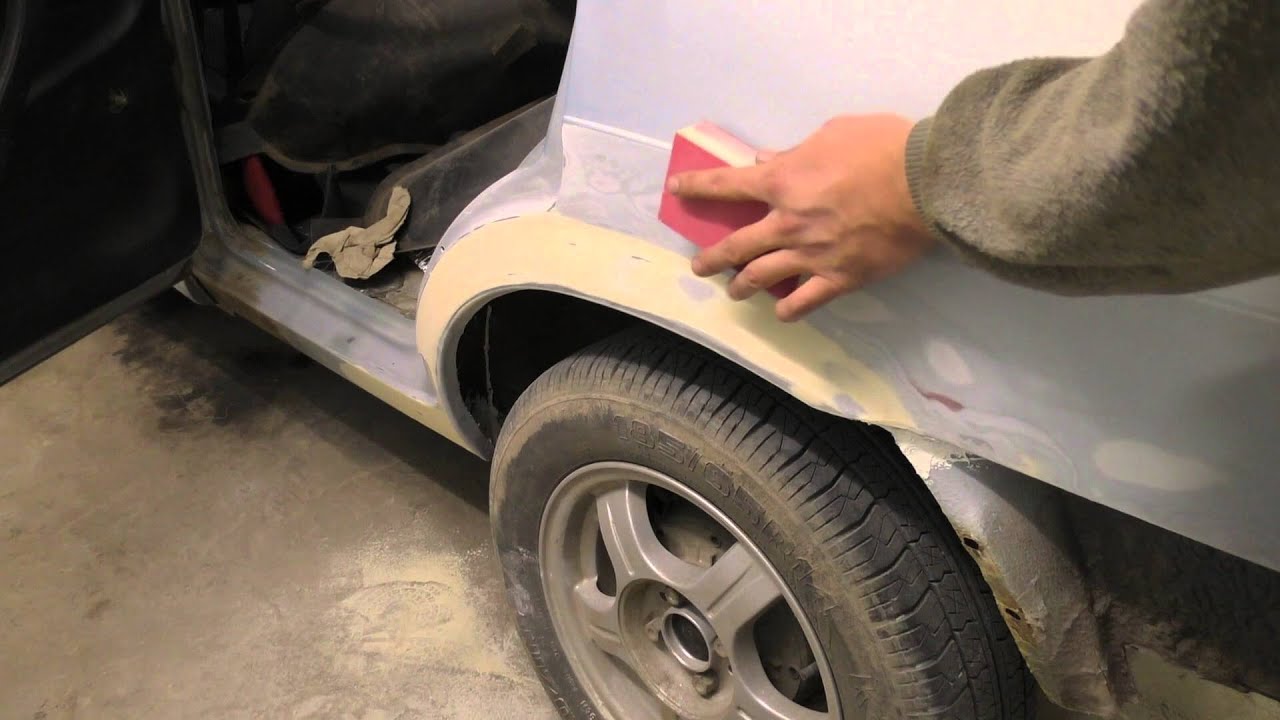
How to Minimize Contamination When Painting a Car
Content
The main part of the auto repair industry is related to body repair. This may include:
- Repair after a collision
- Dent Repair
- Glass replacement
- Painting
- rust repair
- Vehicle customization
Body repairs often involve repainting part or all of the vehicle. Every time the car's exterior trim is affected, a section needs to be repainted.
Painting a car isn't just for looks. It also protects metal components from rust and corrosion and provides a protective layer against environmental elements such as bird droppings and sap.
Applying paint to the car in a uniform, professional way is done by spraying. Compressed air is connected to the spray gun and paint is fed through the gun and atomized by the compressed air being forced through a narrow tip.
In its original form, car paint is too thick to spray onto a car. It must be thinned or cut with another material to be thin enough to be sprayed from a spray gun. Thinner is the most common material used to thin automotive paint, and automotive paints can contain up to 90% solvent.
Unfortunately, the solvent contains VOCs, or volatile organic compounds, which react with the environment and contribute to the formation of ozone, an important component of smog.
However, there are ways to minimize the pollution created by painting a car.
Method 1 of 3: Paint your car in an environmentally friendly environment
Step 1: Paint your car in a professional paint booth.. Specialized car painting equipment, including a spray booth.
The airflow inside the spray booth passes overspray and particulate matter from the air through a filtration system that traps contaminants for proper disposal.
If you don't have access to a spray booth at your workplace, inquire about renting time at small local body shops.
Step 2: Use clean filters in the booth. To effectively manage particulate matter, change the spray booth filters as often as directed in the installation instructions.
Some filters should be changed every 1-2 weeks, while others may last 6-12 months.
Some spray booths use water to filter VOCs and other pollutants from the air.
Dispose of all filters and booth materials as hazardous waste to prevent contamination.
Method 2 of 3: Use water-based paint
Typically, paints are thinned with solvents, also known as thinners. Solvents are volatile organic compounds, that is, they evaporate easily. They are the main source of pollution when painting a car.
The use of water-based paint reduces the contamination caused by the paint by removing the solvent from the paint material.
Step 1: Find a water-based car paint supplier.. Major paint suppliers such as PPG offer water-based paints for every application.
Step 2: Apply paint according to the manufacturer's instructions.. Dilute the paint with water in the exact proportions indicated in the instructions.
As a general rule, waterborne paints require the application of two colored base coats followed by a clear coat.
Step 3: Alternatively, use a low VOC solvent based paint to spray the paint..
- A warning: Although water-based paints produce less harmful pollutants, always use protective equipment, including a respirator. The paint itself contains toxic substances that, if inhaled, can cause serious illness.
Method 3 of 3: Use High Volume, Low Pressure Spray Equipment
The main source of pollution in automotive refinishing is overspray. This happens when sprayed paint is sprayed at high pressure and suspended in air. One method of painting, known as HVLP or Low Pressure Large Scale Painting, minimizes the amount of overspray created.
Because there is less overspray with HVLP guns, there is less paint waste overall. Reducing the amount of paint you use not only reduces the amount of harmful contaminants, but also saves you money on paint supplies.
Step 1: Purchase an HVLP Spray Gun. There are two main types of HVLP spray guns on the market: the siphon feed gun with a funnel at the bottom and the gravity feed spray gun with a funnel at the top.
The siphon feed works well and is more economical to buy.
Gravity feeding requires less compressed air pressure and results in even less overspray than a siphon fed HVLP gun.
Step 2: Set the pressure. Set the pressure on your compressor to 50-80 psi according to the instructions on your gun.
The gun has an air cap that limits the air pressure at the tip to 10 psi, but the air supply must be higher for uniform paint application.
Minimizing contamination when applying paint is critical, but there are other ways to reduce contamination when painting a car. Always safely dispose of masking materials by checking with your local authorities for proper disposal methods. Also, dispose of unused paint in hazardous waste bins. If you make a mistake and need to remove spray paint or want to learn more about painting your car before you start, it's always a good idea to be fully prepared before attempting such a task.
